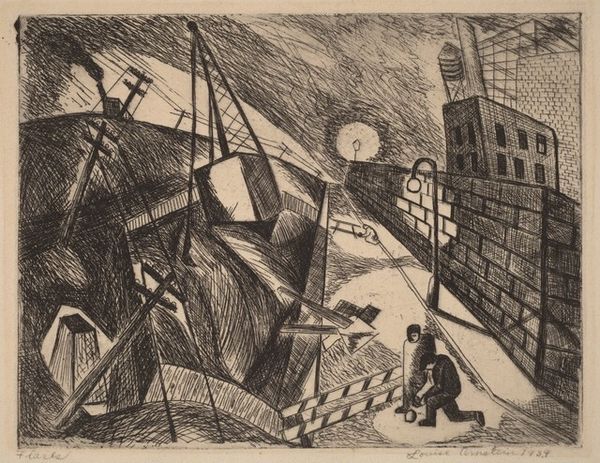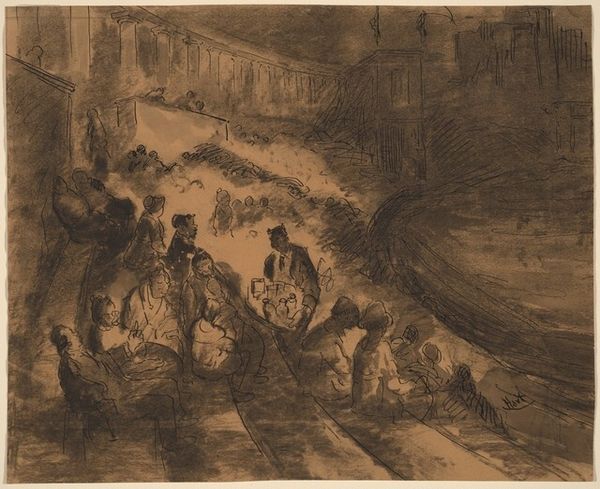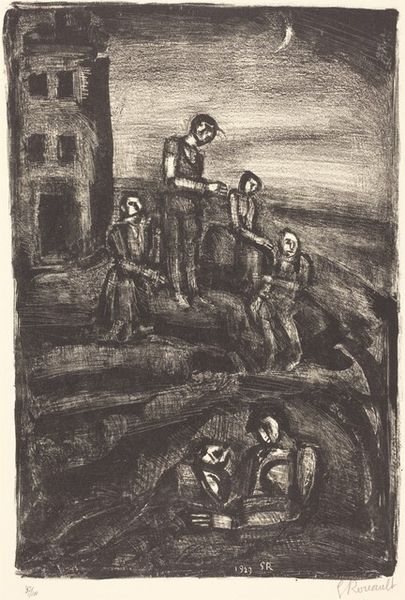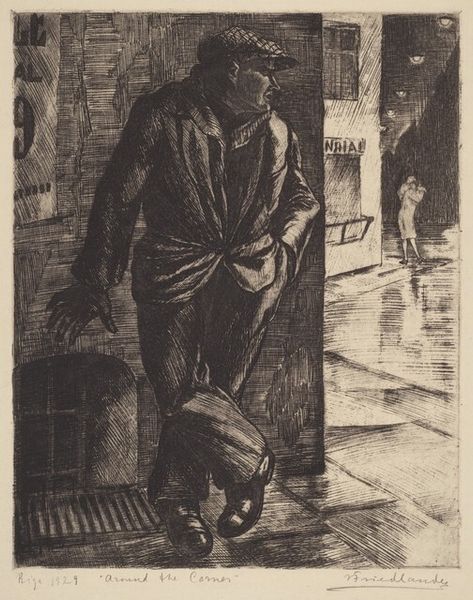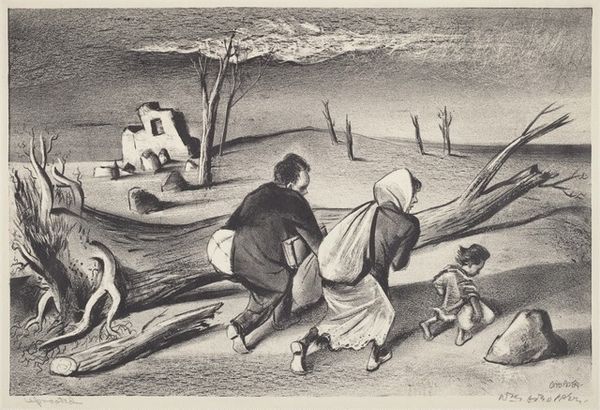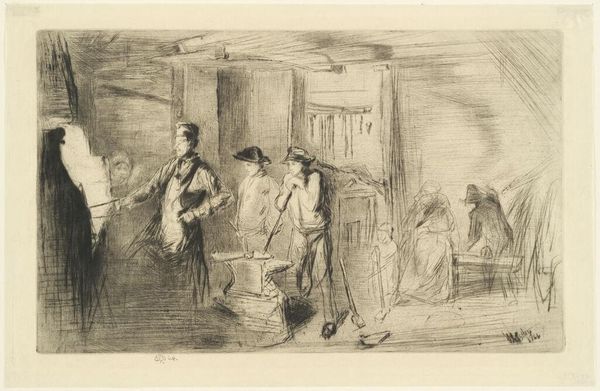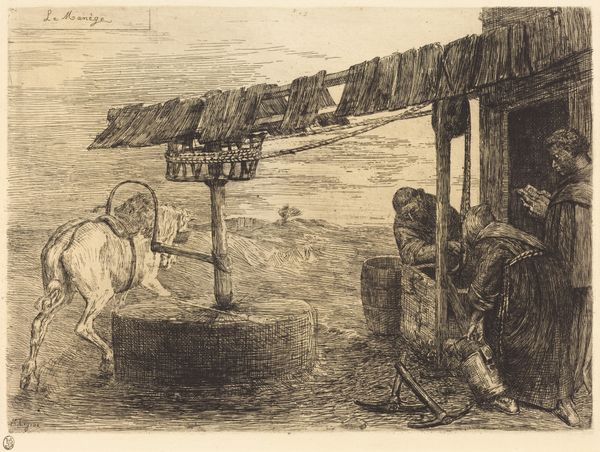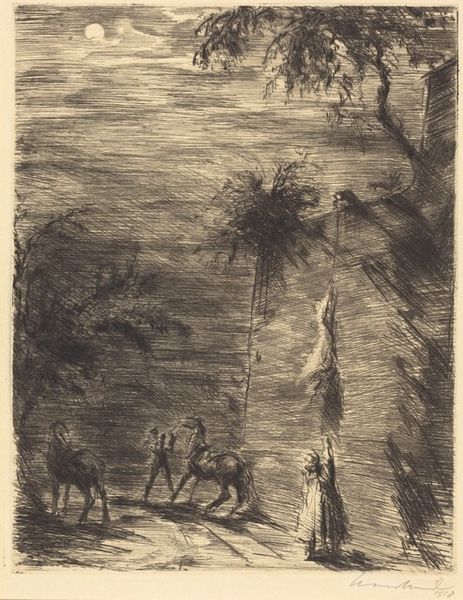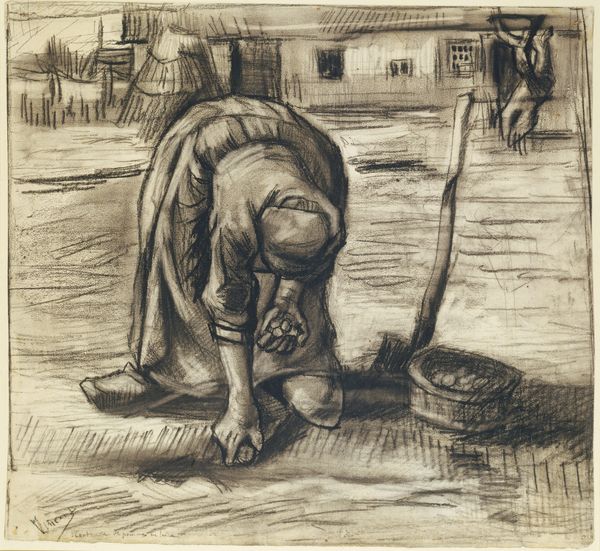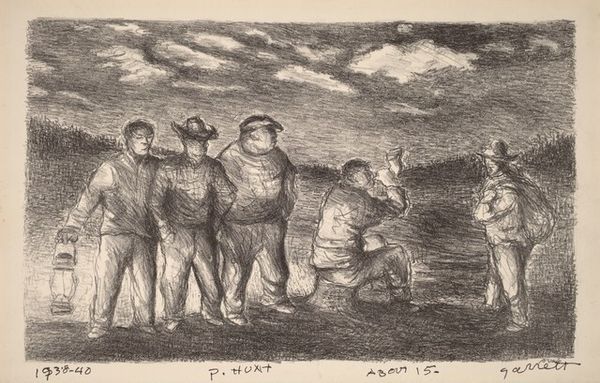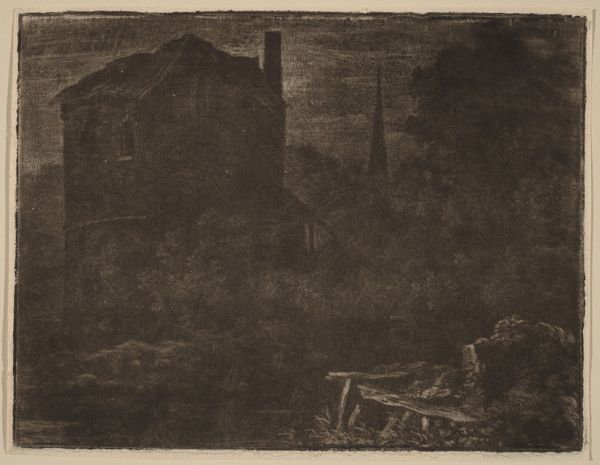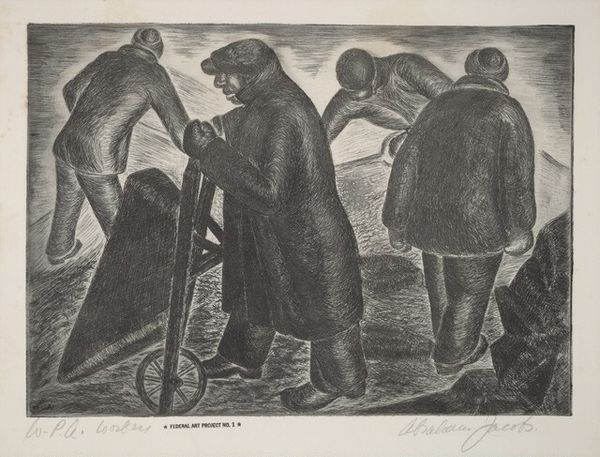
Stone breakers, Le-Raincy 1881
0:00
0:00
georgesseurat
Museum of Modern Art (MoMA), New York City, NY, US
drawing, pencil, graphite, charcoal
#
drawing
#
impressionism
#
pencil sketch
#
landscape
#
charcoal drawing
#
pencil
#
graphite
#
cityscape
#
charcoal
#
realism
Dimensions: 30.8 x 37.5 cm
Copyright: Public domain
Curator: This graphite drawing by Georges Seurat, "Stone breakers, Le-Raincy", was created in 1881 and now resides at MoMA. Editor: My immediate response is to the oppressive atmosphere rendered by Seurat’s layered hatching technique; it evokes a somber feeling of drudgery and marginalisation. Curator: Notice how Seurat used this same complex hatching technique across the entire picture plane. This approach creates visual consistency, eliminating sharp contrasts and offering a nuanced tonal scale. Editor: And beyond technique, one might consider the social conditions in France during this period. The title immediately casts light on this. We should understand the historical context of industrialisation and its impact on the working class. Curator: The subject is certainly workers. And the perspective emphasizes their activities but look more closely at how the architecture is framed within the composition. The buildings’ geometry serves as visual anchors, which helps structure the scene and control the distribution of tonal values, and ultimately contributes to the picture’s stability. Editor: These stone breakers become metaphors for societal inequalities. By depicting labour, Seurat confronts us with realities of the disenfranchised—their relentless efforts, as well as the architectural spaces that contain their lives, point to broader discussions of power and class. Curator: I agree with that sentiment but I’d push back on the reading by arguing that the cross-hatching effect subdues an easy narrative that could overemphasise anecdotal interpretations. Instead, our eyes are subtly driven throughout a world defined by visual harmony, thus offering an alternative space to the narrative readings. Editor: So in conclusion, while we might observe the formal relationships expressed by Seurat's mark-making, this work resonates most deeply when considering its depiction of manual laborers within the 19th-century cityscape. Curator: Ultimately, "Stone breakers, Le-Raincy," offers a contemplative view that considers its subject not just socio-historically but as a component of his overall composition.
Comments
No comments
Be the first to comment and join the conversation on the ultimate creative platform.
